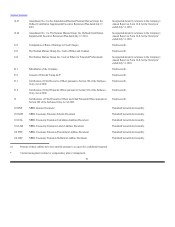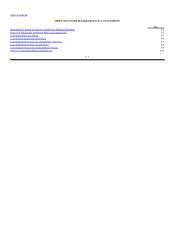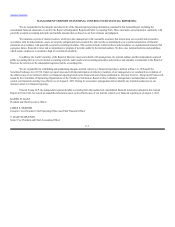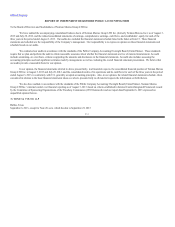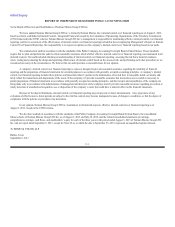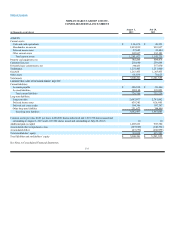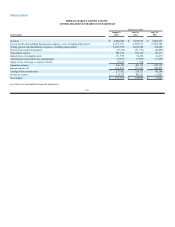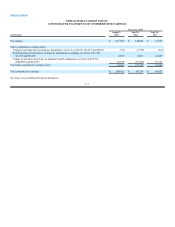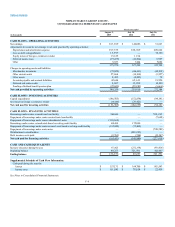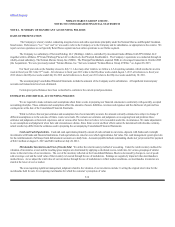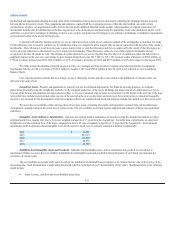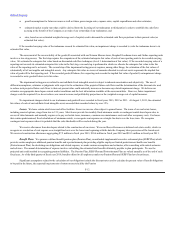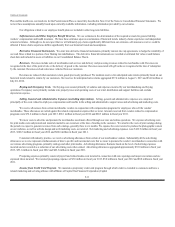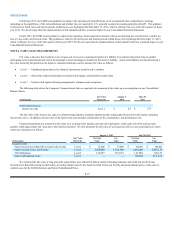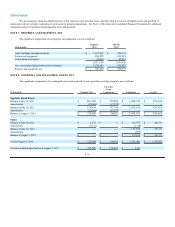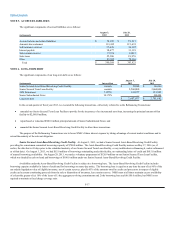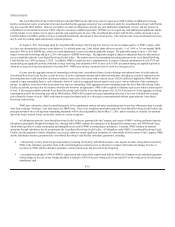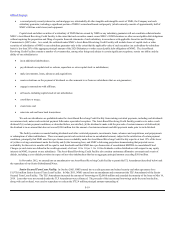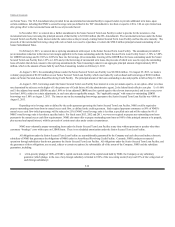Neiman Marcus 2012 Annual Report Download - page 104
Download and view the complete annual report
Please find page 104 of the 2012 Neiman Marcus annual report below. You can navigate through the pages in the report by either clicking on the pages listed below, or by using the keyword search tool below to find specific information within the annual report.
Table of Contents
NEIMAN MARCUS GROUP LTD INC.
NOTES TO CONSOLIDATED FINANCIAL STATEMENTS
NOTE 1. SUMMARY OF SIGNIFICANT ACCOUNTING POLICIES
BASIS OF PRESENTATION
The Company is a luxury retailer conducting integrated store and online operations principally under the Neiman Marcus and Bergdorf Goodman
brand names. References to “we,” “our” and “us” are used to refer to the Company or to the Company and its subsidiaries, as appropriate to the context. We
report our store operations as our Specialty Retail Stores segment and our online operations as our Online segment.
The Company is a subsidiary of Newton Holding, LLC (Holding), which is controlled by investment funds affiliated with TPG Global, LLC
(together with its affiliates, TPG) and Warburg Pincus LLC (collectively, the Principal Stockholders). The Company’s operations are conducted through its
wholly-owned subsidiary, The Neiman Marcus Group, Inc. (NMG). The Principal Stockholders acquired NMG in a leveraged transaction in October 2005
(the Acquisition). We were previously named “Neiman Marcus, Inc.” but were renamed “Neiman Marcus Group LTD Inc.” on August 28, 2013.
Our fiscal year ends on the Saturday closest to July 31. Like many other retailers, we follow a 4-5-4 reporting calendar, which resulted in an extra
week in fiscal year 2013 (the 53 week). All references to fiscal year 2013 relate to the fifty-three weeks ended August 3, 2013, all references to fiscal year
2012 relate to the fifty-two weeks ended July 28, 2012 and all references to fiscal year 2011 relate to the fifty-two weeks ended July 30, 2011.
The accompanying Consolidated Financial Statements include the amounts of the Company and its subsidiaries. All significant intercompany
accounts and transactions have been eliminated.
Certain prior period balances have been reclassified to conform to the current period presentation.
ESTIMATES AND CRITICAL ACCOUNTING POLICIES
We are required to make estimates and assumptions about future events in preparing our financial statements in conformity with generally accepted
accounting principles. These estimates and assumptions affect the amounts of assets, liabilities, revenues and expenses and the disclosure of gain and loss
contingencies at the date of the Consolidated Financial Statements.
While we believe that our past estimates and assumptions have been materially accurate, the amounts currently estimated are subject to change if
different assumptions as to the outcome of future events were made. We evaluate our estimates and judgments on an ongoing basis and predicate those
estimates and judgments on historical experience and on various other factors that we believe to be reasonable under the circumstances. We make adjustments
to our assumptions and judgments when facts and circumstances dictate. Since future events and their effects cannot be determined with absolute certainty,
actual results may differ from the estimates used in preparing the accompanying Consolidated Financial Statements.
Cash and Cash Equivalents. Cash and cash equivalents primarily consist of cash on hand in our stores, deposits with banks and overnight
investments with banks and financial institutions. Cash equivalents are stated at cost, which approximates fair value. Our cash management system provides
for the reimbursement of all major bank disbursement accounts on a daily basis. Accounts payable includes outstanding checks not yet presented for payment
of $46.3 million at August 3, 2013 and $48.6 million at July 28, 2012.
Merchandise Inventories and Cost of Goods Sold. We utilize the retail inventory method of accounting. Under the retail inventory method, the
valuation of inventories at cost and the resulting gross margins are determined by applying a calculated cost-to-retail ratio, for various groupings of similar
items, to the retail value of our inventories. The cost of the inventory reflected on the Consolidated Balance Sheets is decreased by charges to cost of goods
sold at average cost and the retail value of the inventory is lowered through the use of markdowns. Earnings are negatively impacted when merchandise is
marked down. As we adjust the retail value of our inventories through the use of markdowns to reflect market conditions, our merchandise inventories are
stated at the lower of cost or market.
The areas requiring significant management judgment related to the valuation of our inventories include 1) setting the original retail value for the
merchandise held for sale, 2) recognizing merchandise for which the customer’s perception of value
F-10
rd


